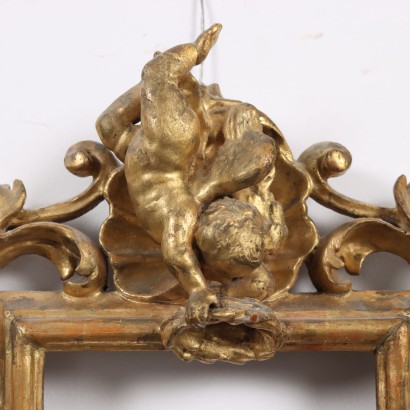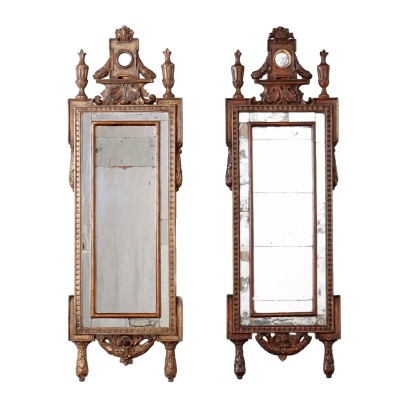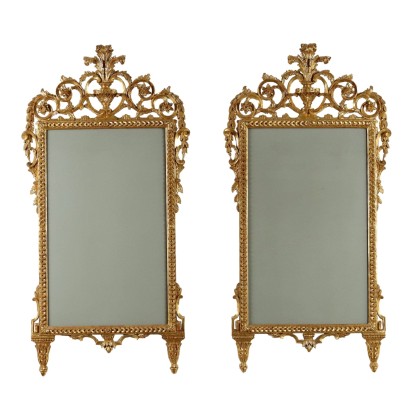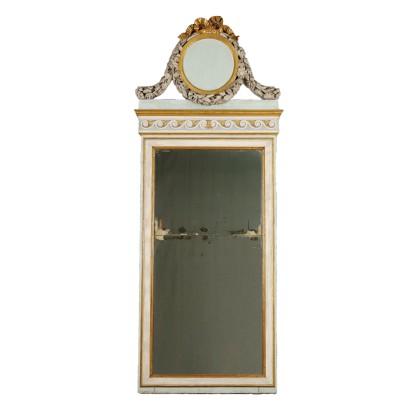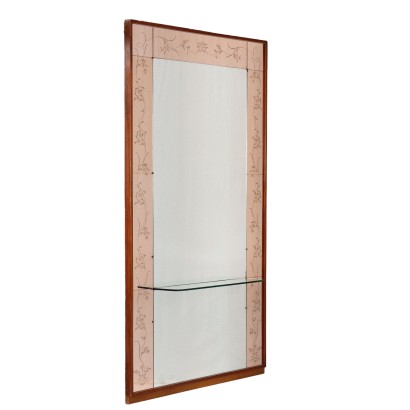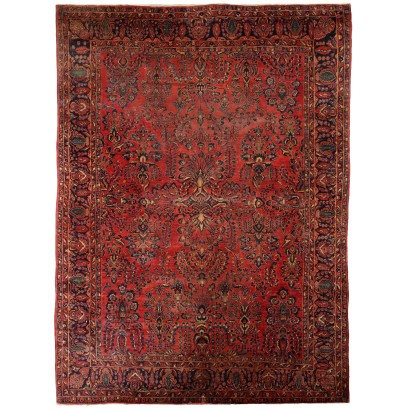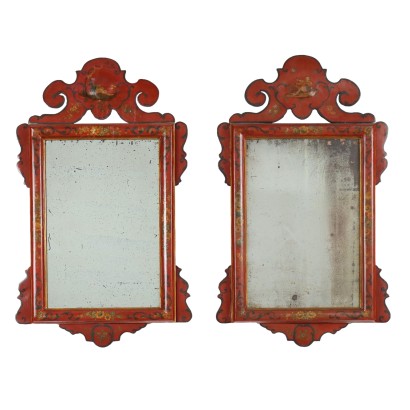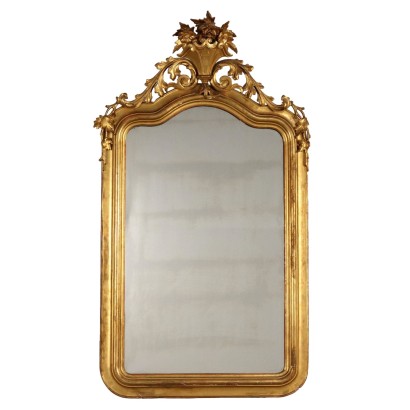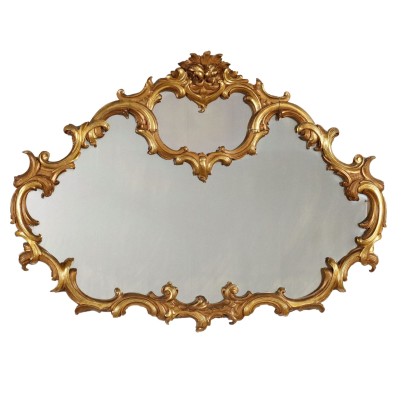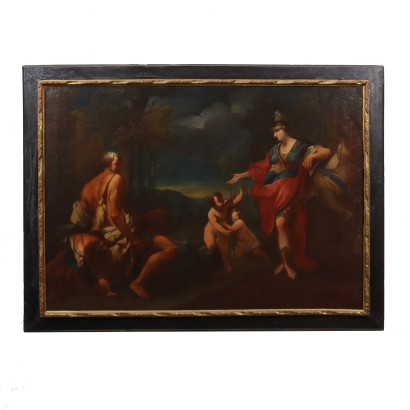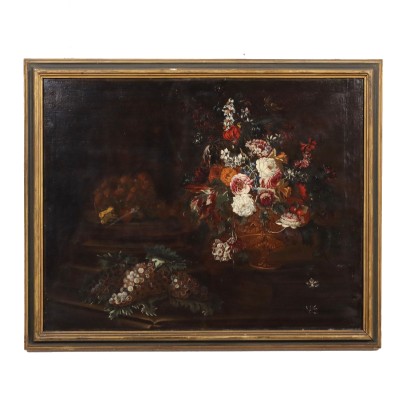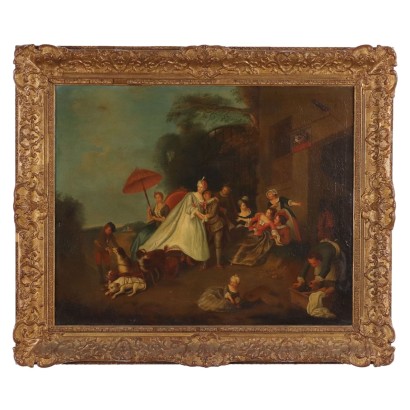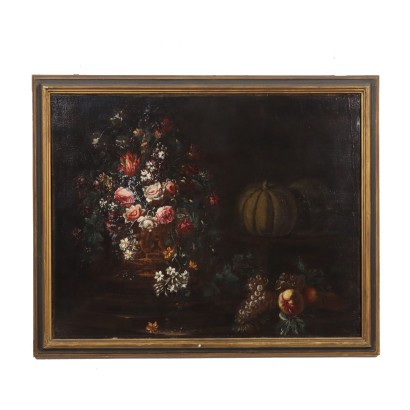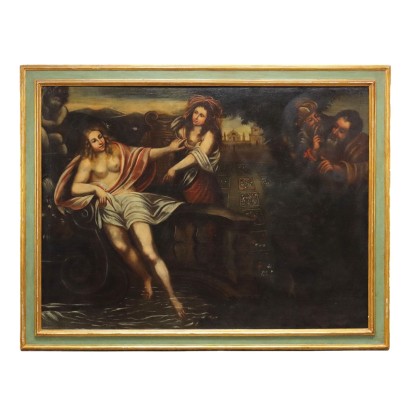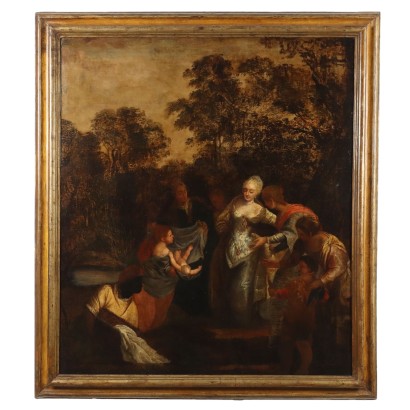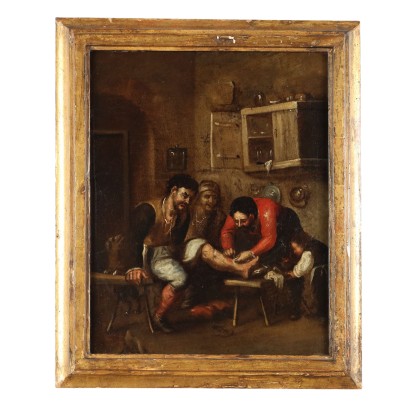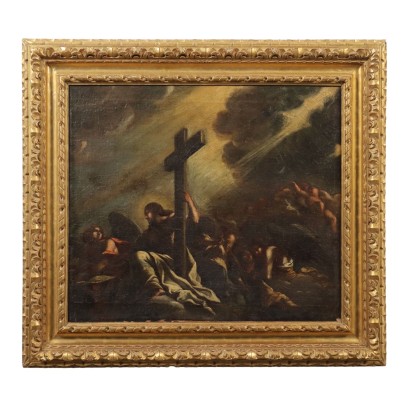Small Portrait Frame - Baroque Period Frame
Features
Baroque Period Frame
Style: Baroque (1630-1730)
Age: 18th Century / 1701 - 1800
Origin: Genova, Liguria, Italy
Main essence: Linden
Description
Small carved and gilded frame from the Baroque period, made in the first decades of the 18th century. The frame is carved in lime wood without applied parts; it is decorated with symmetrical leafy scrolls that end in a coat of arms at the bottom and in a shell on the top, on which a winged cupid flies down, bringing a crown to the figure depicted in the portrait, probably a bride metaphorically represented as Venus, according to the typical attributes, shell and Cupid. The similarity with the more famous frame attributed to Parodi, in which the narration of the Judgement of Paris is depicted, is evident: the moulding of the frame is the same as the two putti placed in the shell, in that case placed at the base of the frame, seem very close, a detail that makes us think of a production by a student of the same workshop.
Product Condition:
Furniture in very good condition that may show slight traces of wear; may have undergone restoration work carried out by an expert. We try to present the real condition of the furniture as completely as possible with the photos. If some details are not clear from the photos, what is reported in the description is valid.
Dimensions (cm):
Height: 50
Width: 32
Depth: 7
Additional Information
Notes historical bibliographic
- Enrico Colle, Baroque Furniture in Italy, ed. Electa 2000 - Alvar González-Palacios, The Temple of Taste, Tuscany and Northern Italy, ed. Longanesi 1986 - Alvar Gonzalez-Palacios, Furniture in Liguria, ed. Sagep, Genoa 1996Style: Baroque (1630-1730)
Read more
The term derives from the Spanish barrueco phoneme or Portuguese barroco and literally means "shapeless pearl".
Already around the middle of the eighteenth century in France it was synonymous with uneven, irregular, bizarre, while in Italy the term was of Medieval memory and indicated a figure of the syllogism, an abstraction of thought.
This historical period was identified with the derogatory term baroque, recognizing in it extravagance and contrast with the criteria of harmony and expressive rigor to which it was intended to return under the influence of Greco-Roman art and the Italian Renaissance.
Baroque, seventeenth-century and seventeenth-century were synonymous with bad taste.
As regards furniture, freedom of ideation, need for pomp and virtuosity gave rise to a synergy destined to produce unsurpassed masterpieces.
The materials used were worthy of competing with the most astonishing tales of Marco Polo: lapis lazuli, malachite, amber, ivory, tortoiseshell, gold, silver, steel, precious wood essences and more dressed the furnishings that in shape and imagination virtually gave life to the Arabian Nights of many of our powerful people.
Typical of the period were load-bearing or accessory parts resolved with twisted column motifs, clearly inspired by Bernini's canopy of St. Peter's, parts with rich sculptural carving in high relief and even in the round within a vortex of volutes, scrolls and spirals, curved and broken profiles, cymatiums agitated by gables of articulated shape, aprons adorned with ornaments, corbels, buttresses and so on. necessary to enliven shapes and structures.
The Baroque is also the century of illusionism: lacquers and thin temperas crowd furniture and furnishings to imitate with the marbling effects of marble veining or games of veining of precious briar roots.
Find out more about the Baroque with our insights:
Classic Monday: a double-body sideboard, late Venetian Baroque
Classic Monday: a pair of candle holders between the Renaissance and Baroque
Classic Monday: a pair of mirrors between Baroque and Late Baroque
Age: 18th Century / 1701 - 1800
18th Century / 1701 - 1800Main essence: Linden
It is a soft, whitish and light wood, used in the past for inlay and carving works.Other customers have searched:
Specchiera, caminiera, frame, cornice, ventole, specchi, psiche, specchiera basculante, specchio d'appoggio, applique..
Se ti interessano specchi, specchiere, psiche, toilette, dai un'occhiata ai nostri approfondimenti sul blog e presentazioni su FineArt
Leggi di più
Una coppia di specchiere a cavallo tra barocco e barocchetto
Il nuovo gusto nel Granducato di Toscana tra Rococò e Neoclassicismo in una specchiera intagliata
Una elegante specchiera intagliata e dorata, espressione dello stile Regency
Il fascino senza tempo della Toilette
Un reimpiego di qualità: da trumeau a specchiera
Caminiera Neoclassica, Firenze, ultimo quarto XVIII secolo
Specchiera Neoclassica, Firenze, fine XVIII secolo
Coppia di Specchiere Irlandesi, in Stile Giorgio III, seconda metà XIX secolo
Specchiera Cinese, Ultimo Quarto XVIII Secolo
Consolle Parietale con specchi
Consolle inglese, metà XIX secolo con specchi
Caminiera Impero, Lombardia, primo quarto XIX secolo
Psiche Impero, Francia, primo quarto XIX secolo
Cornice laccata, Veneto, ultimo quarto XVIII secolo
Specchiera Barocca, Bologna Inizio XVIII Secolo
Specchiera a Cassetta, Bologna Inizio XVIII Secolo
Cornice edicola, Venezia, XVI secolo
Sull'antiquariato in generale dai un'occhiata anche a:
Classic Monday: da un pezzo dei nostri magazzini alla storia dell'antiquariato
L'antiquariato dalla A alla Z: il Dizionario dell'Antiquariato
Il dizionario dell'antiquariato - Lastronatura
Il dizionario dell'antiquariato - Mascherone
Il dizionario dell'antiquariato - Natura morta
Il dizionario dell'antiquariato - Opificio
Il dizionario dell'antiquariato - Pastiglia
Il dizionario dell'antiquariato - Savonarola
Il dizionario dell'antiquariato - Rosone
Intaglio barocco con motivo a ricciolo
Leggi di più
Una coppia di specchiere a cavallo tra barocco e barocchettoIl nuovo gusto nel Granducato di Toscana tra Rococò e Neoclassicismo in una specchiera intagliata
Una elegante specchiera intagliata e dorata, espressione dello stile Regency
Il fascino senza tempo della Toilette
Un reimpiego di qualità: da trumeau a specchiera
Caminiera Neoclassica, Firenze, ultimo quarto XVIII secolo
Specchiera Neoclassica, Firenze, fine XVIII secolo
Coppia di Specchiere Irlandesi, in Stile Giorgio III, seconda metà XIX secolo
Specchiera Cinese, Ultimo Quarto XVIII Secolo
Consolle Parietale con specchi
Consolle inglese, metà XIX secolo con specchi
Caminiera Impero, Lombardia, primo quarto XIX secolo
Psiche Impero, Francia, primo quarto XIX secolo
Cornice laccata, Veneto, ultimo quarto XVIII secolo
Specchiera Barocca, Bologna Inizio XVIII Secolo
Specchiera a Cassetta, Bologna Inizio XVIII Secolo
Cornice edicola, Venezia, XVI secolo
Sull'antiquariato in generale dai un'occhiata anche a:
Classic Monday: da un pezzo dei nostri magazzini alla storia dell'antiquariato
L'antiquariato dalla A alla Z: il Dizionario dell'Antiquariato
Il dizionario dell'antiquariato - Lastronatura
Il dizionario dell'antiquariato - Mascherone
Il dizionario dell'antiquariato - Natura morta
Il dizionario dell'antiquariato - Opificio
Il dizionario dell'antiquariato - Pastiglia
Il dizionario dell'antiquariato - Savonarola
Il dizionario dell'antiquariato - Rosone
Intaglio barocco con motivo a ricciolo
Product availability
The product can be seen at Cambiago
Immediate availability
Ready for delivery within 2 working days from ordering the product.





